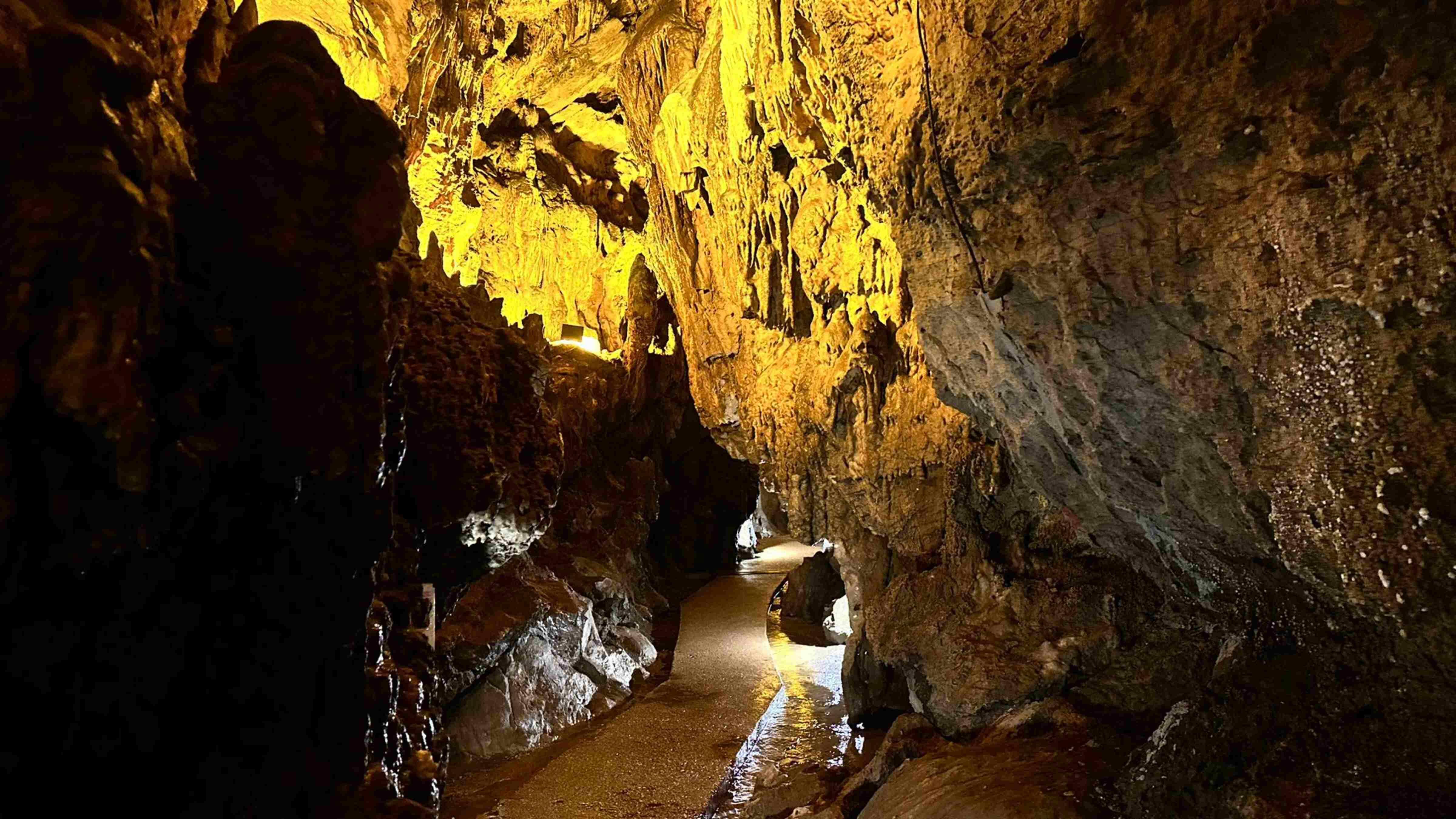
Zindan Cave in Isparta’s Aksu district, which was opened to tourism 23 years ago, has become a frequent destination for visitors thanks to its historical value, cool waters and natural wonders.
Located at an altitude of 1,300 meters, the 765-meter-long cave features significant artifacts including a Roman bridge, the Eurymedon Open-Air Temple and a mosaic of the river goddess.
Inside the cave, which has an impressive atmosphere with stalactites, stalagmites and columns formed over thousands of years, visitors can hear the sound of water flowing from an underground stream crashing against the rocks.
The stream’s water, believed by locals to be beneficial for the skin and found to be rich in calcium and magnesium through analysis, also draws the attention of visitors for this reason.
The cave, whose use as a place of worship and ritual dates back to pagans, Ancient Greeks and Romans, maintains a steady interior temperature of 5 degrees throughout the year.
Domestic and foreign tourists who come to see the natural beauty and examine its historical value also enjoy the chance to cool off in the cave during the hot summer months.
At the cave’s entrance, which is accessed via a historic Roman bridge, a mosaic of Eurymedon — the god of the Bridge River, made of black, white and red cube stones and crafted by hand, draws attention.
Opened to tourism 23 years ago with the installation of a walking platform and lighting, the cave welcomes around 50,000 local and foreign tourists annually. In recent years, it has especially become a new route for history and nature lovers.
Bath water good for the skin
Aksu District Governor Salih Zafer Aydın told the state-run Anadolu Agency that the cave contains many features with historical, ecological and theological significance.
Pointing out that Zindan is one of the caves in Türkiye with the largest walkable area, Aydın said, “Visitors are welcomed by the historic Roman bridge at the cave’s entrance. Then there are various relief-carved stones and columns reminiscent of an open-air museum. Right afterward, there’s the Eurymedon temple area at the cave entrance, which is an open-air temple. Right next to it is a mosaic of the river goddess. These were uncovered during archaeological excavations.”
Aydın noted that the cave has various karstic formations and stated that at the end of the 765-meter path lies a mosaic of the river goddess, which once formed part of a bath area.
He stated that the water flowing from the bath at the end of the cave is believed to be good for the skin, adding, “With scientific studies, this belief has been somewhat confirmed by examining the properties of the water. Our guests can see and explore these artifacts on-site and have an unforgettable experience.”
Salih Ölmez, a visitor to the cave, said he came from Hatay and decided to visit after hearing about it.
Describing the cave as beautiful, Ölmez said, “There are still actively flowing waters inside. It’s possible to see traces of many different historical periods. I recommend everyone to visit this cave.”